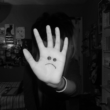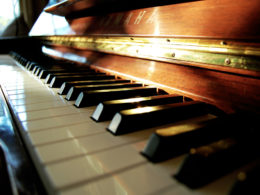Contrary to popular belief, acne is not limited to teenagers. Every kind of person is susceptible to developing acne once they hit the age of puberty. Some people experience acne more than others and even if they follow the skin-care regime of those without acne, they often don’t get the same results. This is because the manifestation of acne is different for different people. Your skin is never exactly the same with others so different skin-care products and skin-care routines will have different effects in every person. For many, having acne can lower self-esteem so much that it keeps them from accomplishing things and from socializing with people. Acne can also be painful and disrupt a person’s normal routine. Here is everything you need to know about acne.
Causes
Basically, there are four main causes of acne: bacteria, oil, dead skin cells, and clogged pores. Your hair follicles sometimes are congested with sebum, dirt, and dead skin cells that accumulate and get trapped beneath your skin thereby causing the raised or bumpy texture. Acne typically appear on the face, neck, back, shoulders, and chest—the areas where sebaceous glands are most abundant in the skin.
These sebaceous glands are connected to the hair follicles and they release natural oils, or the sebum, which is meant to lubricate and hydrate your skin and hair. Normally, these oils will travel along the hair shafts and through the openings of the hair follicles to reach the surface of your skin. However, an excessive amount of sebum and dead skin cells will trap them in the hair follicles, where they accumulate and create an ideal environment for bacteria. Once these clogged pores become infected with bacteria, that’s when acne inflammation happens.
Usually, clogged pores have three outcomes. It may cause the hair follicle to bulge thereby causing whitehead. It may be open to the surface making it darker, causing blackhead. Or, it can become infected leading to red spots with a white center causing acne.
Factors
There are different factors that can make acne worse than it already is.
1. Hormones. Acne is more prominent in teenagers because androgen levels rise during puberty thereby inducing more sebum production as the sebaceous glands enlarge.
2. Diet. There are various food products, such as dairy and carbohydrate-rich foods, that can aggravate acne due to its contents.
3. Stress. Both emotional stress, from daily struggles, and physical stress, from lack of sleep, can induce acne.
4. Medications. Certain medications, such as those with androgens, corticosteroid, or lithium, can increase sebum production or cause fluctuations in hormone production that can worsen acne.
Symptoms
Symptoms of acne vary according to its severity and manifestation. Some of these symptoms include:
• White spots beneath the skin which are indicative of whitehead
• Small, black spots on the skin which are indicative of blackhead
• Small, red, tender bumps
• Painful, pus-filled lumps beneath the skin
• Large, hard, painful lumps beneath the skin
Treatment
Various skin-care remedies are often enough to keep acne at bay for most people. However, if your acne persists or is severe, then you might want to consider paying a visit to the doctor. Otherwise, here are some treatments you can try.
There are two main topical prescription medications for acne. First, retinoids which helps prevent your hair follicles from plugging. Second are antibiotics which can kill the bacteria that have infected your clogged up pores thereby reducing redness and pain. If you plan to use both, use antibiotics in the morning and retinoids in the evening.
As for oral medications, you can try combined oral contraceptives or anti-androgen agent to keep acne-causing hormones at bay. For the most severe cases, isotretinoin is used. However, it requires the patient to be closely monitored as its side effects can be quite severe.








